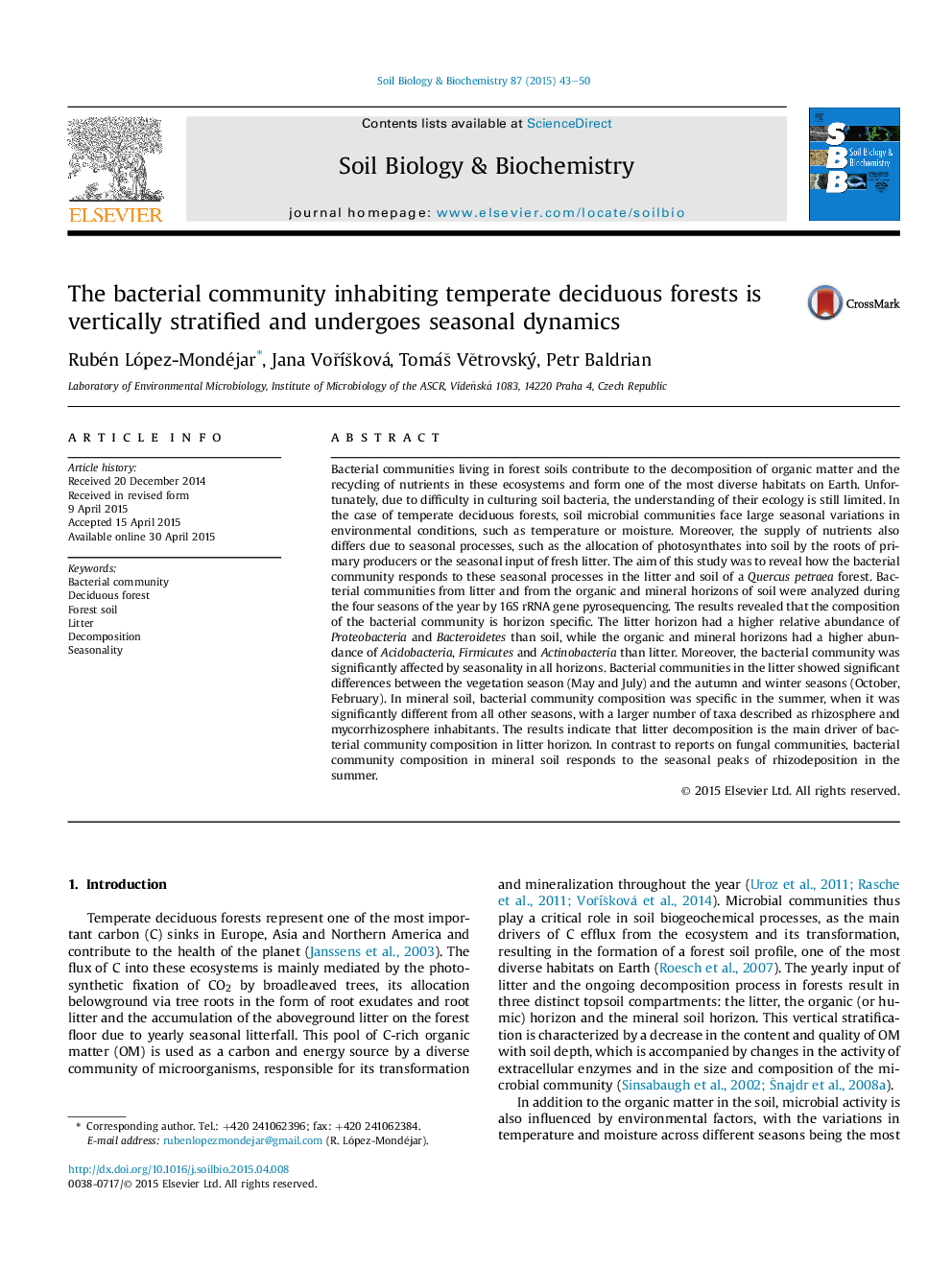| کد مقاله | کد نشریه | سال انتشار | مقاله انگلیسی | نسخه تمام متن |
|---|---|---|---|---|
| 2024499 | 1542597 | 2015 | 8 صفحه PDF | دانلود رایگان |
• Microbial communities in temperate deciduous soil are influenced by seasonal changes.
• We analyzed bacterial communities from litter and soil with pyrosequencing.
• Bacterial communities were horizon specific and affected by seasonality in all horizons.
• Seasonal input of litter drives the bacterial community composition in litter.
• Seasonal variations in tree roots activity drive the composition in mineral soil.
Bacterial communities living in forest soils contribute to the decomposition of organic matter and the recycling of nutrients in these ecosystems and form one of the most diverse habitats on Earth. Unfortunately, due to difficulty in culturing soil bacteria, the understanding of their ecology is still limited. In the case of temperate deciduous forests, soil microbial communities face large seasonal variations in environmental conditions, such as temperature or moisture. Moreover, the supply of nutrients also differs due to seasonal processes, such as the allocation of photosynthates into soil by the roots of primary producers or the seasonal input of fresh litter. The aim of this study was to reveal how the bacterial community responds to these seasonal processes in the litter and soil of a Quercus petraea forest. Bacterial communities from litter and from the organic and mineral horizons of soil were analyzed during the four seasons of the year by 16S rRNA gene pyrosequencing. The results revealed that the composition of the bacterial community is horizon specific. The litter horizon had a higher relative abundance of Proteobacteria and Bacteroidetes than soil, while the organic and mineral horizons had a higher abundance of Acidobacteria, Firmicutes and Actinobacteria than litter. Moreover, the bacterial community was significantly affected by seasonality in all horizons. Bacterial communities in the litter showed significant differences between the vegetation season (May and July) and the autumn and winter seasons (October, February). In mineral soil, bacterial community composition was specific in the summer, when it was significantly different from all other seasons, with a larger number of taxa described as rhizosphere and mycorrhizosphere inhabitants. The results indicate that litter decomposition is the main driver of bacterial community composition in litter horizon. In contrast to reports on fungal communities, bacterial community composition in mineral soil responds to the seasonal peaks of rhizodeposition in the summer.
Journal: Soil Biology and Biochemistry - Volume 87, August 2015, Pages 43–50
